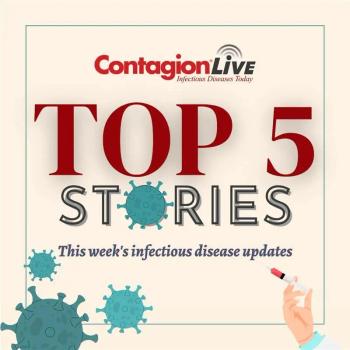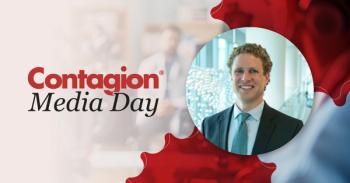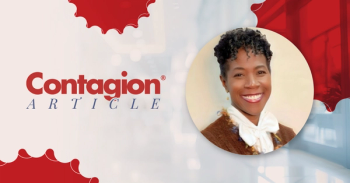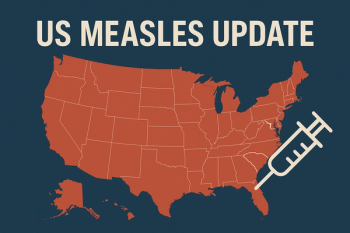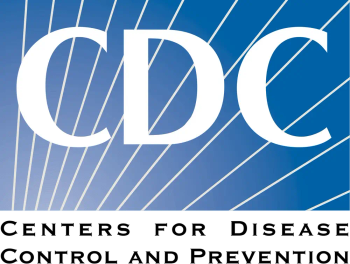
Top HIV News of 2018
Contagion® counts down the top HIV news stories of 2018, including FDA approvals, breakthrough studies, recommendations from the frontlines, and a big-picture look at just how close we are to a cure.
#6: Guideline Updates Cover the Risk of Neural Tube Defects in Newborns of Women Taking Dolutegravir at Conception
The US Department of Health and Human Services (DHHS) guidelines for the use of antiretroviral agents in adults and adolescents living with HIV were updated in May 2018. Many providers refer to these guidelines because of the extensiveness of their coverage of both treatment and management recommendations for people living with HIV.
Preliminary
The rate of neural tube defects in infants born to mothers living with HIV taking dolute­gravir from the time of conception was 0.94% (95% CI, 0.37 to 2.4) which was higher than the rates in those who started dolutegravir during pregnancy, 0.0% (95% CI, 0.0 to 0.13), and those who were on non-dolutegravir based antiretroviral therapy, 0.12% (95% CI, 0.07 to 2.1). Based on this potential safety signal, the DHHS issued a statement regarding dolutegravir use in women of childbearing potential.
A documented negative pregnancy test is recommended before providers initiate dolutegravir. If patients are pregnant and within 8 weeks from their last menstrual period, the risks and benefits of staying on a dolutegravir-based antiretroviral therapy regimen versus switching to a non—dolutegravir-based antiretroviral therapy regimen should be discussed.
Continue reading about dolutegravir use in women of childbearing potential
#5: US Task Force Recommends Use of PrEP in HIV Prevention
Those at the frontlines of HIV prevention and treatment—namely: infectious disease specialists—know the value of pre-exposure prophylaxis (PrEP).
Now, the 2-drug (tenofovir and emtricitabine) combination pill intended for those deemed at high risk for HIV has seemingly garnered mainstream acceptance—finally. In November, the
The move comes 6 years after the pill first received US Food and Drug Administration approval for use in adults at risk for the disease. It was
“The evidence is clear: When taken as prescribed, PrEP is highly effective at preventing HIV,” task force member Seth Landefeld, MD, chair, department of medicine, University of Alabama at Birmingham said in a
Continue reading about the US Task Force’s PrEP recommendation
#4: 2-Drug HIV Regimen Comparable to 3-Drug Regimen in Treatment-Naïve Patients
New results from 2 phase 3 studies evaluating the safety and efficacy of the 2-drug regimen of dolutegravir (DTG) and lamivudine (3TC) for treatment-naïve patients infected with HIV-1 with baseline viral loads up to 500,000 c/mL reveal that the 2-drug regimen is noninferior to a 3-drug regimen of DTG and 2 nucleoside reverse transcriptase inhibitors (NRTIs), tenofovir disoproxil fumarate/emtricitabine (TDF/FTC). The data were presented at the 22nd International AIDS Conference in Amsterdam, the Netherlands.
The GEMINI 1 & 2 studies met their primary endpoints for noninferiority based on plasma HIV-1 RNA <50 c/mL. According to the investigators, rates of virologic failure were less than 1% and patients who experienced virologic failure did not develop treatment-emergent resistance.
“The GEMINI studies show that we can get the efficacy of 3 drugs in a 2-drug regimen with the tolerability and drug interaction profile of DTG and 3TC,” said Pedro Cahn, MD, PhD, principal investigator of the GEMINI studies said in a
Continue reading about the results of the GEMINI studies
#3: FDA Approves Bictegravir for HIV-1
In February, the US Food and Drug Administration (FDA) approved Gilead Sciences, Inc.’s Biktarvy (bictegravir, emtricitabine, and tenofovir alafenamide), a tablet regimen to be taken once-daily for the treatment of HIV-1 infection.
“Biktarvy combines the novel, unboosted integrase strand transfer inhibitor (INSTI) bictegravir, with the demonstrated safety and efficacy profile of the Descovy (FTC/TAF) dual nucleoside reverse transcriptase inhibitor backbone, and is the smallest INSTI-based triple-therapy STR available,” according to a
The regimen is indicated for the treatment of adults with HIV-1 with no history of antiretroviral therapy or as a replacement for a current antiretroviral regimen in adults who achieved virologic suppression (with HIV-1 RNA <50 c/mL) who were on a stable antiretroviral therapy regimen for at least 3 months without any history of treatment failure, and with “no known substitutions associated with resistance to the individual components of Biktarvy,” according to the Department of Health and Human Services’
Continue reading about the FDA approval of Bictegravir
#2: PARTNER 2: Achieving Undetectable Viral Load on Antiretroviral Therapy Renders Individuals Sexually Non-Infectious
New results from an international study referred to as PARTNER 2 indicate that achieving an undetectable viral load while on antiretroviral therapy renders an individual sexually non-infectious. Study results reveal zero HIV transmissions over 8 years in men who have sex with men who chose not to use condoms.
The results of the study—deemed the largest study of HIV transmission risk when a sexual partner is infected with HIV and on effective antiretroviral therapy—were presented at the AIDS 2018 conference in Amsterdam, Netherlands.
The
Not only do these new results signify a similar level of confidence of the level of risk for gay couples is the same as heterosexual couples, the results further underscore the effectiveness of adhering to an antiretroviral therapy regimen.
Continue reading about the results of the PARTNERS 2 study
#1: How Close Are We to a Cure for HIV?
It can sometimes be hard to remember that just a few decades ago, contracting HIV was pretty much a death sentence. In HIV-infected individuals, the disease often progressed quickly to full-blown AIDS, and there was nothing doctors could do at that point except offer supportive care.
Fast-forward to the mid-1990s, when protease inhibitors were introduced and the death rate from HIV began to decline sharply. The multidrug “cocktails” of the 1990s and 2000s have since given way to a much simpler, more streamlined, and more effective treatment regimen that allows individuals with HIV to live a near-normal lifespan with fewer side effects than ever before. Although this is great news, the fact remains that HIV is a particularly stubborn virus. Compared with other lethal diseases such as polio or smallpox, the human body mounts an inefficient immune response to HIV, which is why a preventive vaccine remains elusive. Researchers and patients still hope for the day when HIV can be declared completely cured, but is this a realistic vision, and, if so, how close are we to that goal?
The short answer, according to experts, is “We’re getting there.”
Continue reading about how close we are to a cure for HIV,
Newsletter
Stay ahead of emerging infectious disease threats with expert insights and breaking research. Subscribe now to get updates delivered straight to your inbox.

